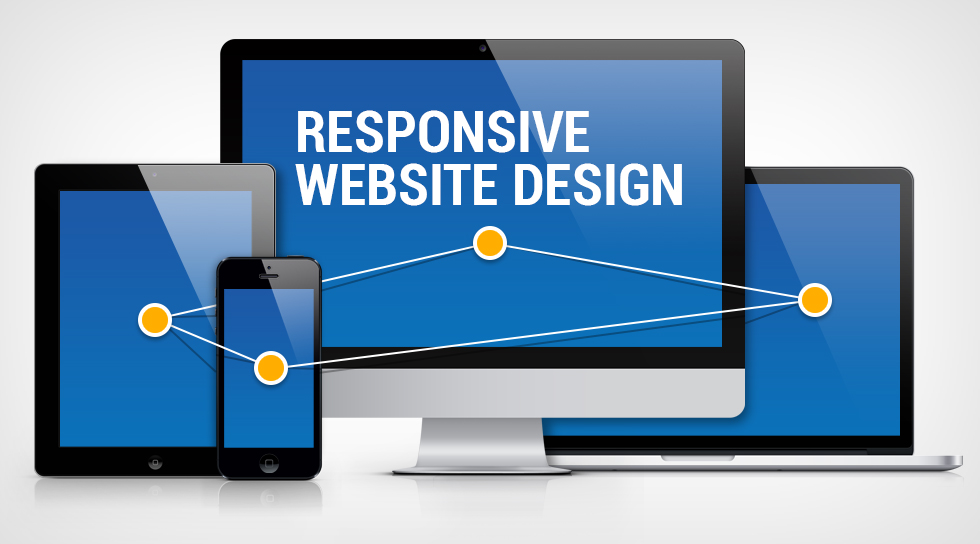Designing for Every Device: The Principles of Responsive Web Design
Learn the ins and outs of responsive web design. This comprehensive guide covers what it is, why it's crucial for your business, and the best practices for creating a seamless user experience across all devices.

In the early days of the internet, websites were designed for a single type of screen: a desktop monitor. But with the explosion of smartphones, tablets, and other devices, a new challenge emerged. How do you create a website that works equally well on a tiny phone screen and a giant desktop display? The answer is responsive web design (RWD).
Responsive web design is an approach to web development that aims to make web pages render well on a variety of devices and screen sizes. Instead of building separate sites for different devices (e.g., a "mobile" site and a "desktop" site), you build a single, flexible website that adapts its layout, images, and content to the user's screen. The term was coined by web designer Ethan Marcotte in 2010, and it has since become the standard for modern web development.
The Core Principles of Responsive Design
Responsive design isn't a single technology; it's an approach built on a few key principles:
-
Fluid Grids: Instead of using fixed pixel widths, responsive designs use a flexible grid system based on percentages. This allows columns and elements to scale and rearrange proportionally as the screen size changes.
-
Flexible Images: Images and media are set to scale within their containers, preventing them from overflowing or distorting. This is typically achieved using the CSS
max-width: 100%property. -
CSS Media Queries: This is the magic behind the responsiveness. Media queries are a CSS technique that allows developers to apply different styles based on device characteristics, such as screen width, height, or orientation. This is where you can tell the browser, "If the screen is smaller than X pixels, change the layout from three columns to one."
Why Responsive Design is No Longer Optional
Creating a responsive website is no longer a "nice-to-have"—it's a fundamental requirement for a successful online presence. Here's why:
-
Enhanced User Experience (UX): A responsive site provides a consistent and enjoyable experience for all users, regardless of their device. They won't have to pinch, zoom, or scroll horizontally to read your content, which significantly reduces frustration and bounce rates.
-
Improved Search Engine Optimization (SEO): Google's "mobile-first" indexing means the mobile version of your site is the baseline for how Google evaluates your content for ranking. A responsive site is inherently mobile-friendly, which helps you rank higher and attract more organic traffic.
-
Cost and Time Efficiency: Maintaining a single responsive website is far more efficient than managing separate sites for desktop and mobile. All your content updates and design changes happen in one place, saving you time, effort, and money on development and maintenance.
-
Future-Proofing: New devices with unique screen sizes are constantly hitting the market. A responsive design is adaptable, meaning it can accommodate future devices without requiring a complete redesign.
Long Description
In a world where over half of all web traffic comes from mobile devices, the way we design and build websites has fundamentally changed. The days of building a website exclusively for a desktop monitor are long gone. Today, a successful online presence requires a site that looks, feels, and functions flawlessly on every device, from the smallest smartphone to the largest ultra-wide display. This is the promise of responsive web design.
Responsive web design, or RWD, is a methodology that allows a single website to adapt to a user's screen size and device. At its core, it's about flexibility and fluidity. Instead of relying on rigid, pixel-based layouts, a responsive site utilizes a fluid grid system where content columns are sized using percentages. This allows the layout to stretch and shrink proportionally as the browser window changes. Complementing this, flexible images are used to ensure that visual content never breaks the layout by becoming too large for its container. Finally, the "smarts" of responsive design come from CSS media queries. These are rules that allow developers to apply specific styles at certain "breakpoints"—points where the layout needs to change to provide an optimal experience. For example, a media query might tell the browser to stack a three-column layout into a single column on a mobile phone to make it easier to read.
The benefits of this approach are far-reaching and impact every aspect of your online business. From a user experience perspective, a responsive site ensures that visitors are never frustrated by clunky navigation, unreadable text, or awkward layouts. This leads to longer visit times and lower bounce rates. For search engine optimization (SEO), Google's preference for mobile-friendly sites means that a responsive website is more likely to rank higher in search results. You also save on development and maintenance costs since you're only managing one codebase. Ultimately, responsive design is more than a trend; it's a foundational principle of modern web development that delivers a superior, future-proof experience for your users and your business.
Conclusion
Responsive web design is a non-negotiable part of modern web development. It's the key to creating a unified and seamless experience for your audience, no matter what device they're using. By embracing fluid grids, flexible media, and media queries, you can build a website that not only looks great today but is also prepared for the devices of tomorrow. Investing in a responsive design is an investment in your user experience, your SEO, and the long-term success of your online presence.




